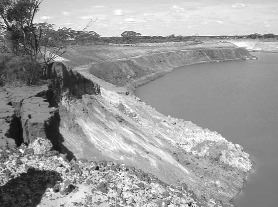In less than a year, La Mancha Resources (LMA-T, LACHF-O) has increased its total underground resources by 70% at its Frog’s Leg gold deposit in Western Australia, driving the company to fast-track its feasibility study on the project for completion by the end of June.
A $2.1-million drill program between May and September 2006 has increased measured and indicated resources by 35% to 369,000 oz. gold, with a 129% boost in inferred resources to 402,000 oz. gold. The average gold grade rose 17% to 8.35 grams gold per tonne, using a new cutoff grade of 3.5 grams.
“Based on the results, we are definitely giving all we have to get this feasibility study out as quickly as possible,” says Martin Aymot, vice-president, corporate development.
The company plans to start construction of its mine portal in July so it can begin gold production by early 2008. La Mancha has budgeted $18 million for development of Frog’s Leg. The company had $50 million in cash at the end of 2006.
La Mancha and its 49% joint- venture partner Dioro Exploration (DIORY-O, DIO-A) will spend $4.6 million on drilling at the project in 2007. By August, the company will have drilled another 20,000 metres in pursuit of converting inferred resources to the measured and indicated category and to further extend the known mineralized zone along strike and at depth.
Frog’s Leg is 20 km west of Kalgoorlie, Western Australia, within the Norseman Wiluna Belt, which is part of the Yilgarn Craton, where two-thirds of the country’s gold and most of its nickel is produced. The deposit was discovered in 1999 and the company produced 116,600 oz. gold from an open pit on the property between April 2004 and October 2005.
La Mancha also plans to bring its wholly owned White Foil gold deposit, 2 km southwest of Frog’s Leg, into production by the end of the year. The White Foil open pit has been on care and maintenance since 2004 because of excessive flow of saline water into the pit. The company is currently draining the pit via a $3.5-million, 6-km pipeline to a transfer facility. If all goes according to plan, La Mancha will produce 10,500 oz. gold in the fourth quarter and 40,000 oz. gold in 2008.
The company also has a 51% stake in the Ity gold mine in Cote d’Ivoire, and a 40% stake in the Hassai gold mine in Sudan.
The company’s stock recently traded at around $1.17 in Toronto. La Mancha has 142 million shares outstanding, 64% of which are owned by Areva (ARVCF-O).


Be the first to comment on "The mine from La Mancha"